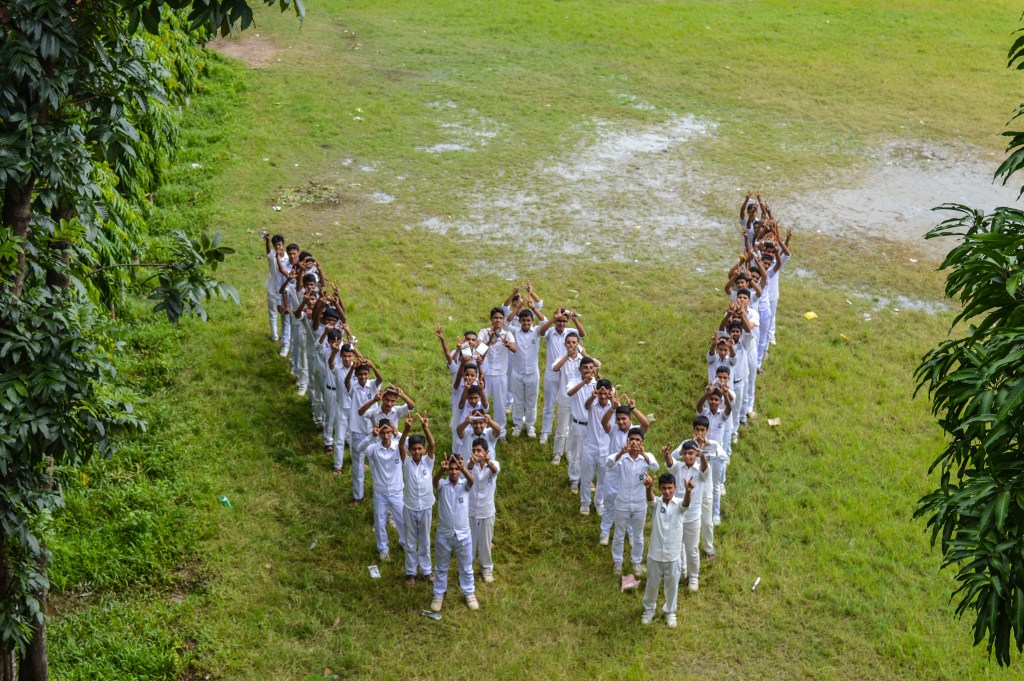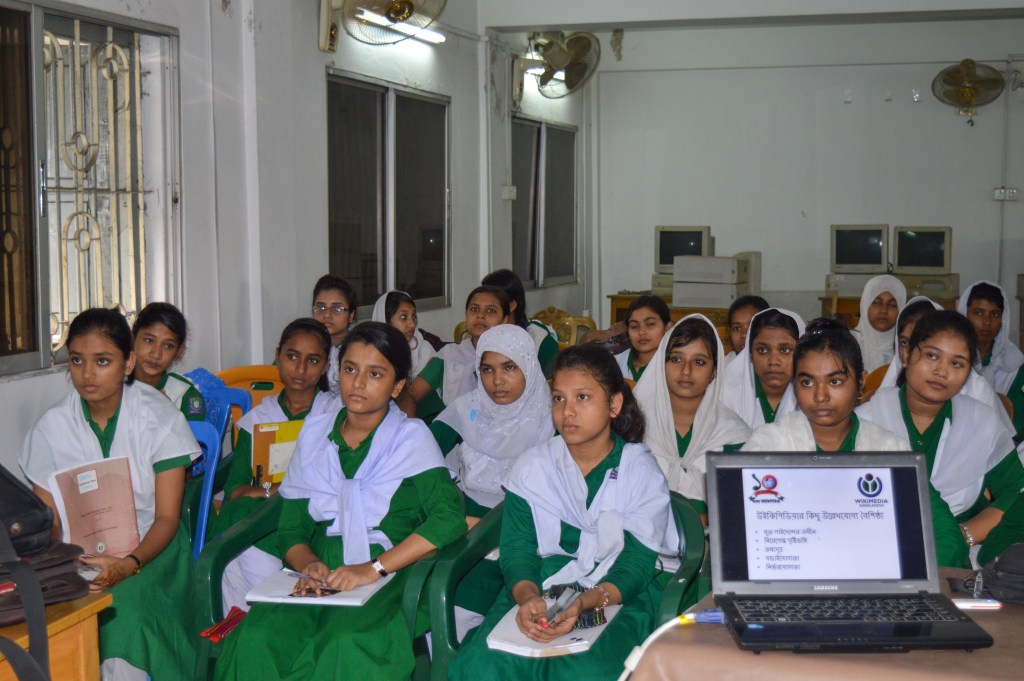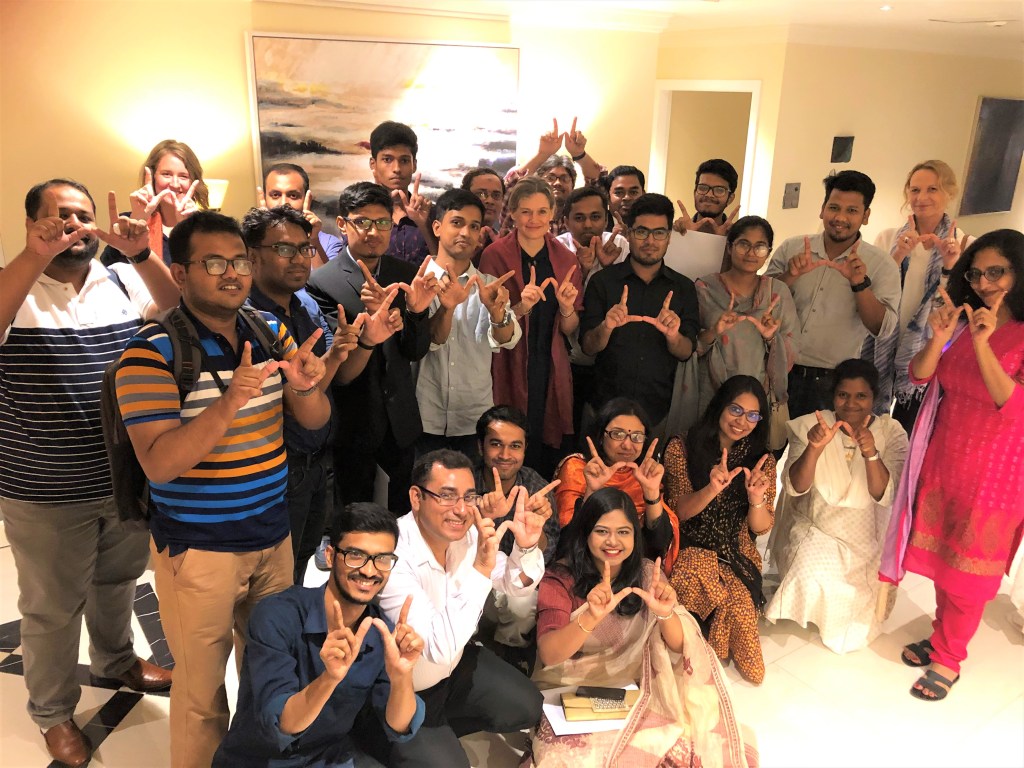Bengali Wikipedia (bn.wikipedia.org), the largest Bengali language free encyclopedia on the planet, has marked its 20th anniversary. Bengali Wikipedia, the only free online encyclopedia written in Bengali, officially started its journey on January 27, 2004.
During the early 21st century, obtaining Bengali information online was a nearly insurmountable challenge. Even though over 234+ million people spoke Bengali then, there was a notable absence of an online encyclopedia in the Bengali language. All the information related to Bengali and Bangladesh was in English. In February 2002, the development team initiated the establishment of language-code-based sub-domains to cater to various language Wikipedias. Among these sub-domains, the Bengali language sub-domain was introduced. A placeholder page automatically materialized in this sub-domain on June 1, 2002. Subsequently, on December 9, 2003, Shah Asaduzzaman, a Bangladeshi PhD student at McGill University in Canada, reached out to Wikipedia co-founder Jimmy Wales, expressing a desire for the creation of Bengali Wikipedia. In response to this request, developers crafted a test page on Wikipedia titled Home Page on December 26 of the same year.
Despite its launch in 2004, the Bengali Wikipedia faced initial challenges in technical and other dimensions. As the new Wikipedia, the primary objective was to boost the article count. However, accomplishing this task proved to be quite challenging. Because at that time, writing Bengali on the internet was not as easy as today; even there were no writing tools from Wikimedia. One of the pioneers of the Bengali Wikipedia, Ragib Hasan said:
The biggest challenge was writing something in Bengali on the internet. Bangla Unicode was not supported by most operating systems, only a few websites on the internet supported Bangla Unicode, and users had to face difficulties in configuring it. Besides, the idea of writing something with Bangla Unicode was new. Initially, the idea of a Wikipedia in Bengali was not viable.
—Ragib Hasan, Kaler Kantho, February 25, 2017

Currently, typing in Bengali on the internet is straightforward, thanks to integrating the Avro Keyboard into Bengali Wikipedia. Additionally, a selection of impressive free Bengali fonts has been included. Since then the number of articles has increased due to the convenience of writing. As a result, Bengali Wikipedia achieved the milestone of 10 thousand articles in October 2006, becoming the second South-Asian language to do so. During that period, the active user count stood at only 20-25. Between 2009 and 2010, Bengali speakers from West Bengal and other territories in India also started to contribute to Bengali Wikipedia. However, after the launch of the mobile version in 2010, the number of users increased significantly. In 2012, the Bangla Wikipedia Unconference was the first ever big-level conference-like outreach event organized by Wikimedia Bangladesh in association with Chittagong Independent University and Bangladesh Open Source Network. The Unconference aimed to raise awareness about Wikipedia, acquaint participants with the functionalities of Wikipedia editing and foster the growth of Wiki culture and consciousness. Around 300 students from schools, colleges, and universities of Chattogram participated in this event. Thus, Bengali Wikipedia continued to thrive, and by October 2013, the number of articles had surged to 25 thousand.
Bengali Wikipedia experienced its golden age in the years 2014-2015. To mark the 10th anniversary of Bangla Wikipedia, Wikimedia Bangladesh organizes year-long workshops, article contest, editathons, photography contest and photowalks as well as nationwide campaigns. In 2015, as part of the legacy of the 10th-anniversary celebrations, Wikimedia Bangladesh has been hosting Wikipedia awareness programs in schools around the country. Out of the nine workshops, four were held in Chattogram, three in Dhaka, and one each in Lalmonirhat and Rajshahi. On February 26, 2015, Jimmy Wales, the co-founder of Wikipedia, visited Bangladesh on the occasion of the 10th anniversary of Bengali Wikipedia. During his keynote address, Jimmy stated that according to the article depth, Bengali Wikipedia is rated quite well. Following that, the active user count experienced growth, accompanied by an increase in the number of quality articles.



L to R: (1) Women participants at a workshop in 2015. Photo by Kanon Ahammad / CC-BY-SA-4.0. (2) Students showing a ‘W’ sign during the school program held in 2015. Photo by Motiur Rahman Oni / CC-BY-SA-4.0. (3) School program to encourage students to read Bengali Wikipedia. Photo by Motiur Rahman Oni / CC-BY-SA-4.0.
In 2015, the Good Articles Contest was initiated to promote the creation of quality articles. In this contest, approximately 600+ quality articles have been translated from English. Then, the annual article competition was organized for three consecutive years from 2017 to 2019. To sustain this momentum, Wikimedia Bangladesh has been conducting an annual article enhancement competition called the Amar Ekushey Article Competition since 2021, spanning a few months each year. Every year various editathons are organized on the occasion of various national and international days. Presently, Bengali Wikipedia organizes various article competitions and editathons throughout the year. These include Wikipedia Asian Month, Feminism and Folklore Editathon, Open Access Week Editathon etc. Cultural exchange projects have also been conducted in joint ventures with other Wikipedia communities at various times. These include the Arabic–Bengali Cultural Exchange Program and the Bengali–German Cultural Exchange Project.

In June 2017, Bengali Wikipedia reached the milestone of 50 thousand articles. Since 2018, the growth rate of articles on Bengali Wikipedia has continued to increase, as more than 16,000 articles were written in 2019 and over 21,000 articles in 2020. Where only 8.8 thousand articles were written in 2018. In December 2020, the Bengali Wikipedia achieved a significant milestone by surpassing 100,000 articles. It’s remarkable to note that while the first 50 thousand articles took thirteen years to create, the subsequent 50 thousand were achieved in just three years. The increase in growth can be credited to a combination of successful editathons and the influx of numerous prolific contributors. The majority of whom encompass students, educators, researchers, writers, journalists, and various other professionals. Wikimeetups are organized in different parts of the country almost every month to build communication and friendship between Wikipedians. These gatherings provide an open invitation for anyone interested to participate in discussions, gain insights into the intricacies of Wikipedia, and connect with the Wikipedia Community. Also, every year on International Mother Language Day, Bengali Wikipedians gather in different parts of the country under the banner “Enrich Bengali Wikipedia”.

As of January 27, 2023, Bengali Wikipedia has 146,500+ articles, including 9 Featured Articles and 179 Good Articles. There are approximately 1,200+ users actively engaged per month, overseen by a team of 13 administrators. Today’s Bengali Wikipedia is much more lively and creative than before. The enthusiasm of older users as well as several new users has made Bengali Wikipedia more informative, and their professionalism has also increased the quality of information. Bengali Wikipedia has a higher rate of new user growth than before, as well as a higher retention rate of newcomers.

Generated from Wikimedia Statistics.
Imagine, twenty years ago, when writing Bengali on the internet was a pipe dream, today Bengali has become one of the most powerful languages in the online world. The majority of these contributions are from Bengali Wikipedia and its contributors. At present, Bengali Wikipedia ranks 63rd among the 326 languages of Wikipedia in terms of number of articles. It ranks 5th in article depth among 318 active Wikipedias worldwide. In 2023, Bengali Wikipedia was read about 483 million times from all over the world.

Can you help us translate this article?
In order for this article to reach as many people as possible we would like your help. Can you translate this article to get the message out?
Start translation

